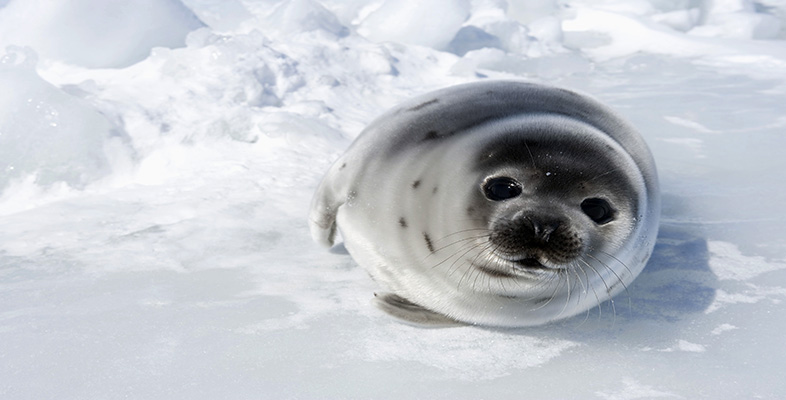2.4 Variable fecundity
The food supply for most polar species depends on several unpredictable factors so successful breeding is far from certain, even if births are tightly synchronized with the seasons. Maintaining pregnancy and feeding the offspring after birth (or hatching in birds) are energetically expensive. The death of the offspring before its maturity represents an irredeemable loss of ‘reproductive investment’ for the parents, particularly the mother, although the earlier in parental nurturing that the death occurs, the smaller the loss to the parents. Various mechanisms of environmental determination of fecundity have evolved among large birds and mammals and are particularly evident in arctic species.
Like most large ungulates, reindeer produce only one offspring a year and suckle it for more than 6 months, by which time the next pregnancy may be well underway. Observations on Svalbard reindeer show that in December, nearly all adult females are pregnant, having conceived during the mating season in the previous September. But as winter progresses, the proportion that are pregnant falls, and by June the following year, any fraction from over 90% to less than 10% of the adult females give birth to a fawn. The other pregnancies must have ended in abortion or reabsorption of the fetus. In each year, the proportion giving birth is approximately the same in all areas of Svalbard that can be studied, suggesting that it is related to the climate. Exactly how the reindeer ‘knows’ when to terminate a pregnancy which she is unlikely to be able to complete successfully is currently under investigation, but the quality or quantity of the food available during the winter is the most likely factor.
The fecundity of arctic foxes is also very variable: in years when prey and carrion are abundant, some litters consist of as many as 20 pups (with an average of 10–12 in Canada and 6.4 on Svalbard), a very large number for a canid (dog-like) mammal, but very few breed at all in years when food is scarce. A similar pattern is found in predatory birds such as the snowy owl, which also feeds on rodents and hares that undergo population cycles. When prey are abundant, the fox or owl parents can raise a large number of pups or chicks but if food availability suddenly falls (due to mass mortality or migration of prey or a change in the weather), most or all of the offspring may starve in the nest. Food intake and/or energy stores somehow regulate ovulation and/or the number of ova that implant successfully and develop, so that as far as possible, fecundity is adjusted to food supply in a fluctuating environment. However, very little is known about the mechanisms involved: the formation and maintenance of the placenta depend upon several different hormones, some of them secreted from the pituitary and brain. The body may respond to stress or insufficient nutrition by terminating the pregnancy prematurely, thereby enabling the mother to build up reserves that could support a pregnancy in the next breeding season at which the prospects of a more successful outcome appear brighter.
